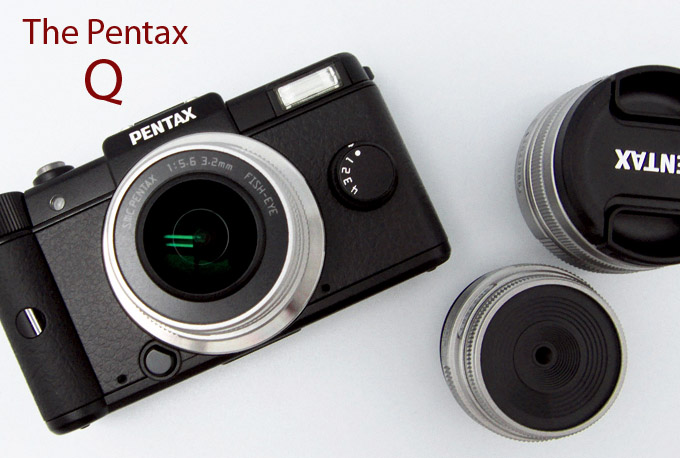
The Pentax Q Digital Camera Review – A pocket full of pixels!
By Steve Huff
A while back I remember seeing that Pentax would be releasing a 12.4 megapixel camera called the Pentax Q and I was excited at first because I thought WOW, Pentax is getting into the mirror less camera market! I love Pentax (see my K5 review here) so I knew it had to be good. But then when I read that it was a teeny tiny sensor camera with interchangeable lenses I thought “oh no, it’s going to suck with that small sensor” ! But in reality I kept an open mind because I wanted to love it. I mean, why would Pentax release a camera like this if the image quality sucked? Deep down I knew they wouldn’t so I waited for the release with my fingers crossed.
It appeared from the looks of it that Pentax was releasing an enthusiasts styled body with a consumer oriented sensor. Why not a larger sensor I asked? Well, after I received the Q I realized WHY they used the smaller sensor and also applaud them for taking this approach as there is NOTHING out there quite like this Pentax Q at this time.
Let me start off by showing you the features of the Q.
The Features of the Pentax Q – (From the B&H Photo Website)
Small and Light Interchangeable Lens Digital Camera
The Q represents an evolution in interchangeable lens digital camera design, featuring a small and light body. Experience the Pentax Q. The camera. Evolved.
Q-Mount Lens System
The Q features the newly designed Pentax Q-mount lens system for convenient interchangeability with a variety of specialty Q lenses. Choose from a selection of prime, zoom, fisheye lenses, and more to suit just about any photographic need. This Q System standard kit includes the 8.5mm lens (equivalent to 47mm)
12.4Mp
Enjoy exceptional image quality in 12.4Mp courtesy of the Q’s 1/2.3″ backlit CMOS image sensor. Capable of producing 12 bit DNG RAW and JPEG image, the backlit CMOS sensor is a highly efficient light-gathering instrument designed specifically to produce very low noise at high levels of sensitivity
Durable
Though extremely compact, the Q is also surprisingly durable, sporting lightweight, scratch resistant magnesium alloy covers
Traditional DSLR Shooting Modes
Experienced photographers will enjoy the power and flexibility of traditional DSLR shooting modes such as Program, Aperture/Shutter Priority, and Metered Manual exposure control. Yet casual shooters will appreciate the highly convenient automatic modes such as the set-it-and-forget-it Pentax Auto Picture and 21 scene modes
Customizable Quick Dial
Conveniently choose from a variety of creative modes, Smart Effect options, or camera settings to assign to the Q’s Quick Dial located on the front of the camera. Easily customize the setting or effect using the Quick Dial’s 4 positions, allowing you to concentrate on photography without having to explore the camera’s menu system
HDR Capture
In-camera HDR capture mode shoots 3 images of varying exposures, blending them to bring out the details in even the darkest shadows and brightest highlights of extreme contrast shots
1080p HD Video
Shoot high quality motion video with stunning full 1080p HD clarity at 30 frames per second. The Q efficiently processes the full HD video using high quality H.264 compression for superior color and detail. Explore creative video effects through the use of custom image modes, digital video filters, and interval shooting; or select from a variety of Q lenses to realize your perfect artistic vision
Sensor-Shift Shake Reduction
Capture stabilized, blur and dust free images even in low lighting courtesy of the Q’s sensor-shift Shake Reduction system with integrated DRII Dust Reduction. Body-based Shake Reduction operates independently of the Q’s lenses, allowing the same level of stabilization regardless of lens selection
3.0″ LCD Monitor
Easily capture or review images and video using the Q’s large 3.0 inch LCD monitor. The high quality LCD features HVGA resolution with 460,000 dots, as well as viewing angles up to 170 degrees horizontally and vertically
5 Frames Per Second
Capture even the fastest action with a 5 frames per second continuous shooting mode, ideal for sporting events, children at play, or any fast action situation
Bokeh Control Filter
Enjoy effortless bokeh control with the Q’s bokeh control filter. Traditionally controlled through a DSLR lens’s aperture, bokeh is the out of focus part of the background that helps to emphasize the subject, drawing the viewer’s eyes to the most important part of the photo. The Q assists the experienced and casual photographer alike by offering a fine degree of extra control over image bokeh via an in-camera filter operation
Smart Effects Mode
New Smart Effects modes enhance digital photography by applying a series of effects to images to achieve high quality finishing. Brilliant Color, Vintage Color, Warm Fade, Bold Monochrome, and Water Color are just some of the Smart Effects available, which can also be assigned to the Q’s Quick Dial
USER Modes for Creativity
Powerful USER modes allow the creative photographer to save a series of favorite camera settings, filters, and custom image modes for instant reuse
1/2000 to 30 Second Shutter Speeds
Shutter speeds range from 1/2000 to 30 seconds, perfect for freezing fast action or capturing long nighttime exposures. Bulb mode adds flexibility for low light photography and motion effects
Built-In Pop-Up Flash
The Q’s built-in popup flash adds the perfect amount of extra light to an image, while its high extension naturally reduces the redeye effect common to compact cameras. The Q’s flash is effective to 23 feet at 200 ISO, and covers a wide angle 28 degree field of view
HDMI Port
A built-in micro HDMI port is perfect for outputting high resolution images and video, with sound, to modern HDTVs
SD, SDHC, and SDXC Memory Cards
The Q is compatible with the latest generation SD, SDHC, and SDXC memory cards for ultra-high capacity storage as well as outstanding image file portability
RAW File Processing
The Q includes SILKYPIX Developer Studio 3 software for powerful and flexible RAW file processing. In-camera RAW image development is also supported
External Viewfinder Available Separately
Compose images and video either with the Q’s LCD monitor or using a shoe-mounted viewfinder attachment available as an optional accessory. The External Viewfinder O-VF1 makes an excellent -accessory to the Q, offering outstanding compositional framing, even in the brightest sunlight where viewing an LCD screen is traditionally a challenge
So here is my take on the camera with my real world use review!
The Pentax Q is what I will refer to as a consumer enthusiasts camera. What does this mean? Well, it means that it kind of seems targeted at BOTH the average consumer who is longing for something cool and exciting and doesn’t care about sensor size, as well as the Enthusiast (that would be me and you). The enthusiast side of this camera lies in its functional body design and control. I will say it right now…the Pentax Q has a BRILLIANT design and menu control system. It has a magnesium alloy body that feels solid but the camera is TINY! It looks like a spy toy camera in person and the size is very hard to convey in pictures. The image near the top of this page shows it sitting next to a roll of packing tape, a SMALL roll.
Here it is in my small hand…
But as I said, the camera feels pretty amazing in the hand. Solid and sturdy, which is always good. The control dials all click with a firm authority. The camera is very well made. On the top there is an on and off button, a solid feeling shutter button, a control dial that allows you to change modes like “AV, M, O, TV, Auto, SCN, Movie and even a mode called “BC” which stands for “Blur Control”. There is also another control wheel for when you make your menu choices. The build and feel reminds me of the great Ricoh cameras, the GRD and GXR.
Using Blur Control: I had the blur control setting at the 2 bar mark and snapped this one. If you click on it to see the larger version you can see how sharp this out of camera JPEG is. It was shot at f/1.9 and I converted to B&W with the new DXO film pack 3 Tri-X setting.
Below is another JPEG using blur control at “2”. The Q could not get the AWB correct inside the camera store but mostly all cameras fail this “camera store lighting test”. My M9 did as well. Keep in mind this is a JPEG from the camera.
But turn the Blur Control too high to “3” and you get a funky fake looking image that is blurred in the wrong places. The “3” setting is meant for smaller subjects but I wanted to see how it would do with a portrait. I think a level “1′ is good for portraits.
Blur control allows you to control and add out of focus areas (shallow depth of field effect/Bokeh) to your image. Let me explain. For those who found this review in google and do not know what Bokeh is, it is the effect that you get much more easily with larger sensor and large aperture lenses – when the background of your photo is out of focus and your subject is in sharp focus.
Many times you will read in reviews “that lens has great Bokeh” which means its out of focus areas are rendered beautifully. Bad bokeh would mean the out of focus areas are rendered not so beautifully. In the case of the Q, with its small sensor you really can not get shallow depth of field (though its possible by focusing up close with the kit lens at 1.9) so when using the “BC” mode the “Bokeh” is fake and added in camera after the picture is taken so what you get is hit or miss. It appears the Q judges what to put and where by where you focus your camera and levels 1, 2 and 3 add the least to most blur.
But there is much more to the Q than the BC mode. The Q is a hip and cool take anywhere camera meant for FUN which is why Pentax has released a series of “Toy” lenses along with a couple of normal lenses. So the BC control is just a “fun” feature that some may get a kick out of, and in some cases it CAN work well.
BTW, the kit lens that ships with the Q is superb and my favorite lens that I have used with the Q and though it does have distortion, the camera fixes this when shooting JPEG. The magic of this system seems to come out when using this lens, at least in my experience.
The kit lens is a 47mm equivalent lens with a fast 1.9 aperture. The image below was shot with that lens at 1.9 and ISO 320 – click for larger – this is an out of camera JPEG, just resized with some slight sharpening.
The Q stuff that matters – Usability and overall Quality
You can have the coolest design and all of the cuteness in the world but if the usability is not there then it is just not fun to use a camera. When I find a camera that tugs at my heartstrings and makes me want to buy it then that means it usually has fast and accurate AF, is easy to control and use, feels good holding it, and has good image quality. One camera that comes to mind that fits all of these requirements is the twice as big Olympus E-P3. The E-P3 is fantastic and the new lenses like the 12mm and new 45 1.8 are SUPERB. The E-P3 is $899 and is worth the cost IMO if you want a fun and serious camera. The Q is $799 and has image quality that is a bit lower than the E-P3 in color, and high ISO use and detail…BUT the Q is so tiny it does fit in your coat pocket easily AND the Dynamic Range seems really good for a small sensor camera…better than most.
Still the AF speed is somewhat slow with the Q and that could be a concern for some of you with a $799 camera.
* USABILITY VERDICT – Excellent!
I carried this camera with me EVERYWHERE and in my front coat pocket which was quite small. Anytime I saw a shot I wanted I pulled out the Q, framed the shot and snapped. As stated, the focus was not as fast as the E-P3 but nothing really is right now. I would say the AF is on par with the E-P2, GF1, GXR, etc. It’s quick but not blazing fast.
In the hand the Q feels really small but solid and it does have a small round cylindrical grip that sticks out and this does help the “feel” of the camera.
The dials on the camera are solid. There is even a solid dial on the front that allows you to switch to up to 4 presets so you can gave a variety of settings set up and easily switch to them with the front dial. Maybe have one set up to use a bleach bypass filter, one to use black and white, one for lower light shooting, etc. The controls are actually quite perfect. I wish all cameras had a control layout and easy menu system like the Q. The quick menu that you enable by pressing “info” on the back allows you to scroll through the settings with the control dial and scroll through settings with the dial. It is very quick and easy to change settings.
So overall, the camera is fun to use. It is very “slick” looking and in operation. Basically this camera is meant for fun, maybe even as an upgrade to your phone camera as it is smaller than my iPhone is length and width and with the toy lenses more versatile! The usability is EXCELLENT but the focus is slower than most and the LCD is sort of hard to see in sunlight as it glares a bit.
* IMAGE QUALITY VERDICT – Very Good!
The overall image quality is very good and much better than previous smaller sensor cameras I have used. It seems sensor technology is evolving at a fast pace though you still do not get the rich colors and pop of a large APS-C or full frame sensor. The Q has a couple of cool color modes though and one of them that I like is “Bleach Bypass” which adds a dark dramatic bleach bypass tone to your images.
The next two shots were taken in the “Bleach Bypass” mode – JPEGS straight from the camera using the kit lens.
–
below is a FULL SIZE out of camera JPEG in standard mode shot at f/5.6 and ISO 125 – click it for the full size!
So the image quality is VERY good to excellent. In some cases I scratch my head and say “wow, this came from a small sensor”? That right there says a lot! There are other modes as well like “cross processed”, “toy camera”, etc but I really only enjoyed the Bleach Bypass and standard color modes. In comparison to something like a micro 4/3 camera, the Q comes close but can not match the detail and color quality of the larger sensor. But again, the Q is tiny with small lenses and that is the draw here I think.
* HIGH ISO SHOOTING VERDICT – Excellent for this sensor size!
One problem that plagues small sensor cameras is the high ISO capabilities. Even the lovely E-P3 has issues here once you get past 1600 so usually small sensors get REALLY noisy past 800. The Q is actually really good in this department though not as good as a large sensor camera. Still, I was shooting this little guy in all lighting situations. Below are some out of camera JPEG high ISO shots and IMO, ISO 1000 is about as high as you want to go. After that ugly NR and noise creeps in destroying the look of the image though if you shoot B&W, Id go up to 3200 in some situations but beware! If you shoot RAW at 3200 and remove all Noise Reduction you will have an insanely noisy image.
ISO 3200 with the fisheye lens that I found VERY hard to focus. It is a manual focus lens but I could never get a sharp image, ever (UPDATE – I was NOT using the LCD Manual Focus Assist, and THIS makes all the difference in the world). Click image for larger and 100% crop.
–
ISO 1000 straight from camera file – click image for the full size. Looks pretty damn good! This was taken indoors at lunch.
ISO 3200, RAW conversion, NO Noise Reduction, Shot in LOW light and converted to B&W – It’s noisy but most cameras are when shooting in LOW light and high ISO.
So the bottom line in the ISO dept? If I owned this camera I would shoot it up to ISO 1000 when shooting color and up to 3200 if B&W and there was some light involved (I like some grain to my B&W). It is better than most small sensor cameras but still has that smaller sensor look at high ISO if you know what I mean. If not, then you wouldn’t notice anyway and it would be fine. 🙂 It does get noisy but with a mix of in camera stabilization and the fast 1.9 lens, you can usually get away with lower ISO.
* HD Video Quality – 1080P – Average/Good
The Pentax Q even shoots HD video at 1080P resolution. YEP! This small fry guy even has built in image stabilization for a smoother video look (though it is not perfect) for this size of camera it is pretty freaking cool. The more I shot with the Q the more I appreciated what it is and is not. This camera is so small yet has so much capability and if size is important to you, as in SMALL size, then you really should look at the Q system.
With that said, the video does suffer from the “Jello” effect that so many cameras suffer from these days and the quality is very good but not SUPERB. Again, this all lies in the smaller sensor. BUT, you can’t expect the video quality of a Canon 5DII in something like this. But the fact that it has video is a huge plus and what is super cool is that it has time lapse built in. Also, the Jello effect is not present when using a tripod of course.
Below is a quick sloppy sample of video shot with the camera. If i had more time with the Q I could have done a better job in this area, so please be aware of this 🙂
So, is this a camera worth owning? Some thoughts…and comparisons.
Many people are asking me if the Q is worth the $799 asking price. The answer to that depends on you. How much value do you put on the small size? Do you travel often? If so, this camera can be a valuable tool as when I traveled it was always in my pocket and ready to rock and roll. In my opinion, I really wish this came in at $599 or even $699. Those two numbers sound better than $799 of course but let’s put this into perspective and look at other cameras in this price range and how they may compare.
The Leica D-Lux 5 – The D-Lux 5 is around the same price and also has fantastic image quality. You can see my review of the 5 HERE. The D-Lux 5 is actually bigger than the Q and does not allow you to change lenses so the Q has the advantage in this area. Both have good IQ, both have HD video, both are similar in AF speed but the Q feels better and more like an enthusiasts body with its great control system. Hmmm. Sorry Leica, Ill take the Q here.
Olympus E-P3 – The E-P3 is $100 more than the Q at $899 with a kit zoom that is actually very good. It is also a beautiful and serious camera for the enthusiast market. It has a larger sensor and overall better color and IQ and can even shoot with Leica glass via an adapter. In almost every area it beats the Q except for one. SIZE. The Q is just so tiny that this is it’s selling point. Again, for those who want a SMALL but high quality photographic tool, the Q wins. If you don’t mind bigger for better then the $100 more expensive E-P3 wins. Id take the E-P3.
Sony NEX-5n – The Sony NEX-5n and kit 18-55 comes in at $699, $100 LESS than the Q. It has a large APS-C sensor with better quality than the Q in color, dynamic range and high ISO. It has superb video as well. The Q wins in body design and control by far though, and again in size. The 5n may be tiny but its lenses are huge and therefore it is not pocketable like the Q. These two are so different, Id like to own both.
Fuji X100 – The Q beats the Fuji X100 in HD Video recording and AF speed but overall IQ goes to the X100 of course with its super color and high dynamic range APS-C sensor. The Q wins in versatility as well due to interchangeable lenses but overall IQ, Fuji wins of course but is also $400 more expensive. I love my X100 🙂
Ricoh GRD III or IV – THIS is where the competition lies as this camera reminds me most of the Ricoh in its output but the Ricoh has a fixed 28mm lens, which is also a 1.9 and the Q ships with the 47mm 1.9 (equivalent) and you can change lenses AND the lenses are pretty cheap! Hmmm. The Q also has the solid build like the Ricoh. I have to say I prefer the Q to the GRD III but have not yet tried the new GRD IV which is supposed to have better IQ over the III. The GRD IV is $200 less expensive as well so I guess it comes down to if you want a fixed lens 28mm or a camera that allows you yo change lenses. The Q has the cool factor over the GRD and I would have to choose the Q here over the III. All personal preference.
The new Nikon J1 and V1 cameras – (info here) Now THESE are pretty similar in concept to the Pentax but they are brand new and not released yet. Going by what I see on paper and 1st looks, I would take the Q over these new Nikon offerings. To me, they are ugly, lack in the control dept and are also on the more pricey side. I much prefer a camera with real controls and style and the Q has both as well as great IQ for its size. Unless these Nikons pull off an image quality miracle (UPDATE: They did pull of the IQ, which is fantastic) , my guess is that they were made for the average consumers and not the enthusiasts.
UPDATE – I ende dup LOVING the Nikon V1 and at $849 with lens, Id take the V1 over the Q no question. My review is here.
The Olympus Mini Pen – E-PM1 – I shot with an E-PM1 for a couple days and as much as I adore the Olympus E-P3, I can not say the same for the mini pen. I found the noise during video to be awful, I found the IQ not as good as I got from the E-P3 and the body was difficult to hold. WAY to small and thin. Controls were also lacking. The sensor is larger than the Q, the price is cheaper (with a slower kit zoom) but Id take the Q for its better body style, grip and control, and better kit lens over the E-PM1. Just my opinion!
So again, it all depends on YOU and your needs, wants, and tastes. The Q is a capable and fun camera but if you buy one, remember what I am saying… IT IS TINY but also extremely cool/odd. There is nothing like it out there right now.
This is the Bokeh you can expect at f 1.9 with the kit lens when close to your subject…this was shot as a standard in camera JPEG
The Lenses for the Q
Pentax has released a few lenses with the Q system. I was shipped the kit lens, the fisheye lens and the 100mm equivalent telephoto along with the OVF, which looks huge on the tiny Q but is nice, bright and clear. I will write my brief thoughts on the lenses I used/tried.
The Kit Lens – 47mm Equivilant, f/1.9 aperture – COMES WITH THE CAMERA KIT
This lens has a built in leaf shutter that is virtually silent. It sounds much like the GXR or Fuji X100 systems. The kit lens is the jewel in the lineup with a 47mm equivalent view and a fast 1.9 aperture. It’s light and plasticky and has barrel distortion but the camera processing fixes this when shooting JPEG. When shooting RAW you need software that is compatible with the Q or else you will see distortion. Lightroom and Aperture will support the Q soon enough though so it’s a non issue. All images here are JPEGS, and the JPEGS look great. This lens focuses very close as well and is super sharp. If i were buying the Q, it would be the kit only for now. 95% of the images in this review were shot with the kit lens.
–
The Fisheye Toy Lens – manual focus fixed f/5.6 aperture – BUY HERE
The fisheye lens is cool and fun and super duper light and plasticky. Made in Taiwan this little $129 lens weighs practically nothing. BUT when using this lens I found it hard to get accurate focus and most of my shots with it were very soft until I realized I had the manual focus assist feature turned off. Once I turned it on it made all the difference in the world. This is a manual focus fixed aperture f 5.6 lens and very easy to focus with the smooth focus ring in regards to turning the ring. It delivers a 17.5 equivalent. Here are three shots with the fisheye – converted to B&W with DXO film pack 3. This is cool, a fun fisheye for $129. Sweet!
The 100mn Equivilant telephoto – manual focus fixed f/8 aperture
The Telephoto toy lens is actually the smallest lens of the bunch and is a nice addition to the lineup as it is a 100mm equivalent. The drawbacks though are that it is a manual focus lens and has a fixed f/8 aperture but again, it is easy to focus and I had no issues at all attaining sharp focus. Still the quality is pretty good and I am puzzled as to why it is called a “Toy Lens” as it does not give a toy lens effect as they advertise. This $80 lens is actually an 18mm but due to the small sensor behaves like a 100mm. Crazy, but worth the $80 easily if you are investing in the Q system.
Here is one more with the telephoto from my hotel room…just a test snap 🙂
The Pros and Cons of the Pentax Q
PROS
- IT IS TINY but well built and solid!
- The controls are close to perfect in my opinion.
- Menu and quick menu settings are easy to configure and browse
- Near Silent leaf shutter in kit lens
- Fisheye and Telephoto are DEAD silent!
- 1080P HD Video
- In body Image Stabilization
- External optical high quality VF available for kit lens
- Fits in your coat pocket for take anywhere action
- Pop out flash can be used as is or flipped up and out for better performance
- The card and battery doors are solid and feel great when you open and close them
- Small sensor is limited in the IQ and ISO dept
- Some may think it is a toy due to tiny size
- High ISO can get noisy after 1000
- No swivel LCD screen, this would have added to the experience
- Price seems a tad high for what it is
- Pentax has released a variety of lenses to start out
- External VF is too expensive
- The LCD is hard to see in sunlight
- Small but won’t fit in jeans pocket with lens on.
The Bottom Line Conclusion on the Pentax Q system.
The Pentax Q is cute. It’s also hip and I can even see the hipster crowd carrying around one of these either in their pocket or strapped around their body. The white one could be popular with the girls, the wives…the fashionable ones. This is the smallest interchangeable lens camera in the world as the time of this writing and that right there says a lot. Pentax has created a new mount and new camera system in the ever growing and changing mirror less market and I have to give them a thumbs up for taking this on because the competition is FIERCE.
Nikon has just announced their new mirror less cameras, the J1 and V1. I was underwhelmed to say the least by that announcement. From the specs on paper and the looks, I’d take a Q over those new Nikons any day, unless Nikon has done some magic in the IQ department (but the samples I have seen so far have been just average). (UPDATE – I loved the V1, amazing camera for what it is)
The Q is really something else. A cross between a consumer camera and enthusiasts camera though it does lean towards the enthusiast side more with its lovely body design and build to its wonderful controls. Even has a built in flash that pops out to the side for better performance. The Q almost has it all in a teeny tiny package and I have to say that if this were a but larger with an APS-C sensor and built in EVF, Pentax would have had a game changer (hint hint). The Q design is that good and I LOVE the body design..it kind of makes you want to take it out and get the most out of it.
I had LOADS of fun with this camera while it was with me and it even was a conversation starter on 2 or 3 occasions as some thought it was a spy camera while others had no idea what it was! The image quality rocks for the size and if I were a wealthy man I would own one just for those days when I wanted to go super light or do some time lapse stuff. It’s brilliant. In all reality this camera is very good in all departments. All I can do is judge it from my use and I enjoyed it quite a bit. I wouldn’t replace my X100 with it though as the IQ is not up to par with the bigger guys but it has its place if you can afford it or want to be the james bond of photography 🙂
So I give it a thumbs up all the way around really. I wish it was a bit less expensive but I guess there is a premium for owning the smallest in the world 🙂 Go Pentax! Bring on a macro lens and we will be set 🙂
Where to buy the Q:
I would buy my Pentax Q from B&H Photo and they currently have the black and white in stock for anyone interested. The white is pretty cool looking in person but the black is more classic.
Pentax Q – Black with kit lens – BUY HERE
Pentax Q – White with kit lens – BUY HERE
More Images:
Here are a few more photos from the Pentax Q, all JPEGS! As always, thanks for reading this real world review!
[ad#Adsense Blog Sq Embed Image]
HELP ME TO KEEP THIS SITE GOING AND GROWING!! IT’S EASY TO HELP OUT & I CAN USE ALL THE HELP I CAN GET!
PLEASE Remember, anytime you follow my links here and buy from B&H or AMAZON, this helps to keep my site going. If it was not for these links, there would be no way to fund this site (and the cost these days to keep it going is pretty damn high), so I thank you in advance if you visit these links. I thank you more if you make a purchase! I have nifty search bars at the upper right of each page so you easily search for something at either store! I currently spend 10-14 hours a day working on this site and the only way that I can pay for it is with your help, so thank you! Currently my traffic has been increasing but my funds to pay for the site has been decreasing, so any help would be GREATLY appreciated!
Even if you buy baby food, napkins or toothpicks at Amazon it helps this site, and you do not pay anything extra by using the links here. Again, you pay nothing extra by using my links, it is just a way to help support this site, so again, I thank you in advance ![]() More info is here on how you can help!
More info is here on how you can help!
If you enjoyed this article/review, feel free to leave a comment at the bottom of this page and also be sure to join me on twitter or my new facebook fan page! Also, you can subscribe to my feed at my subscribe page HERE and read these posts in your browser or news reader!

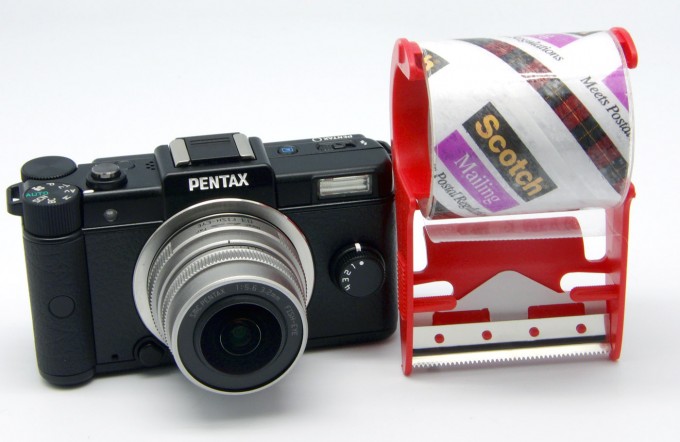
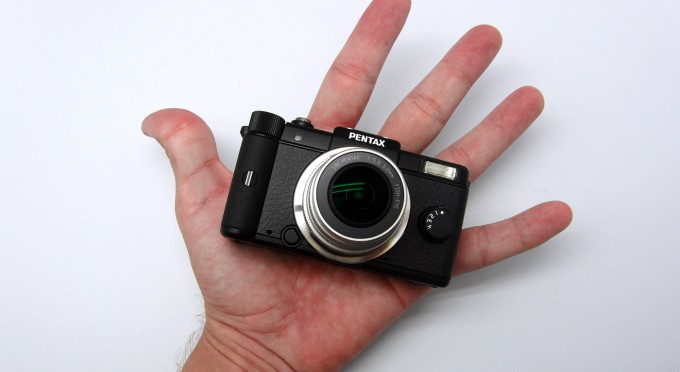
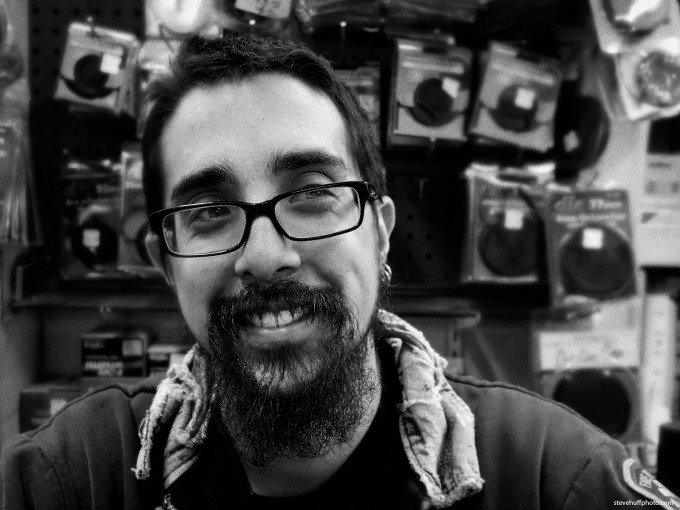
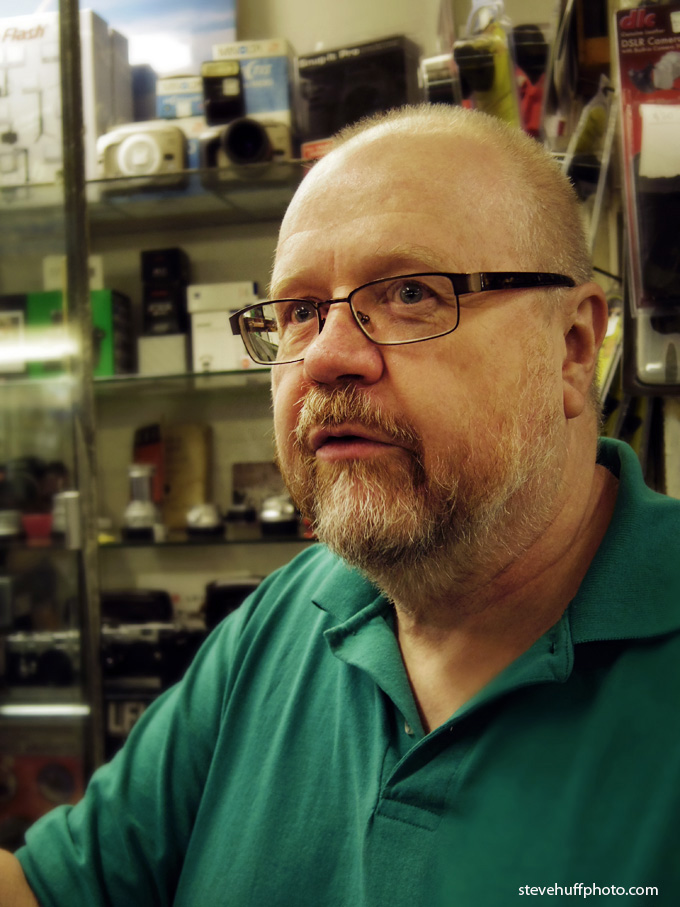

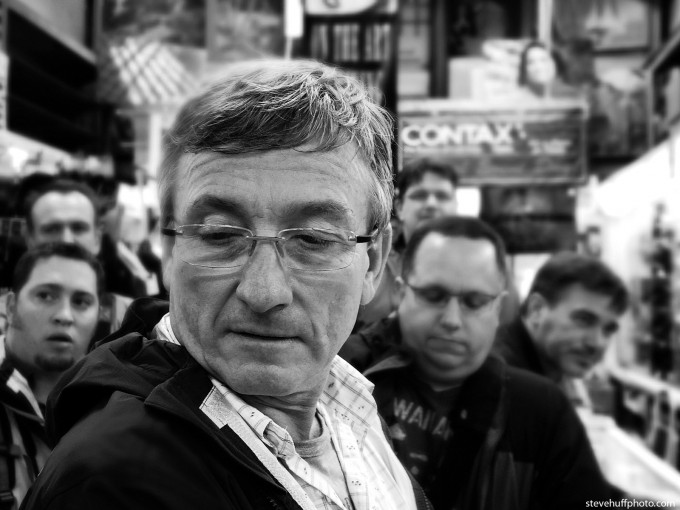
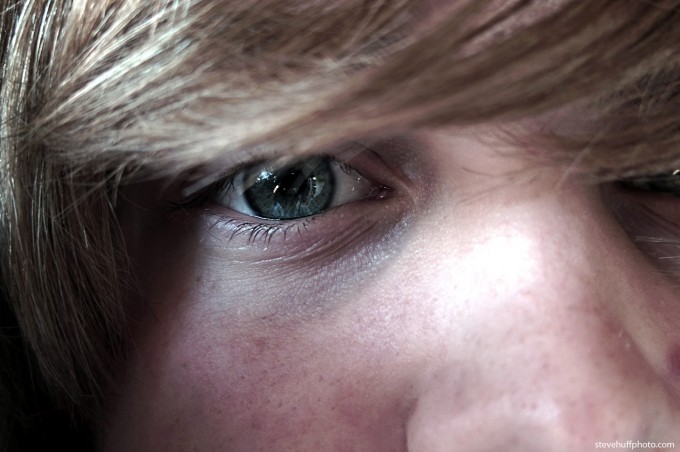

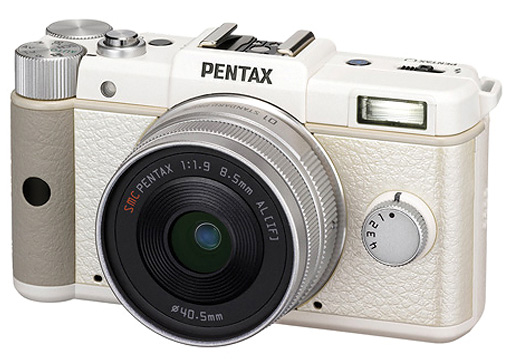
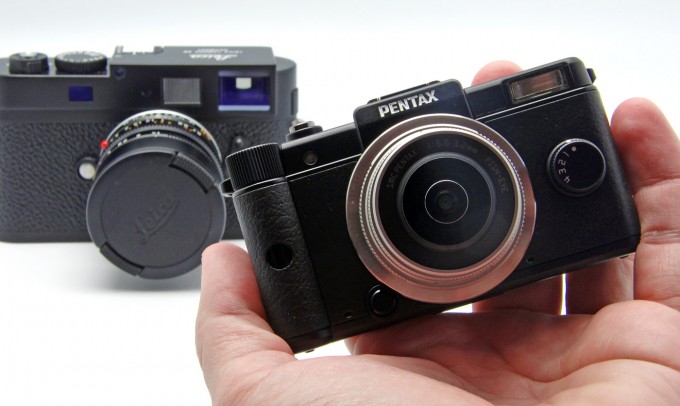
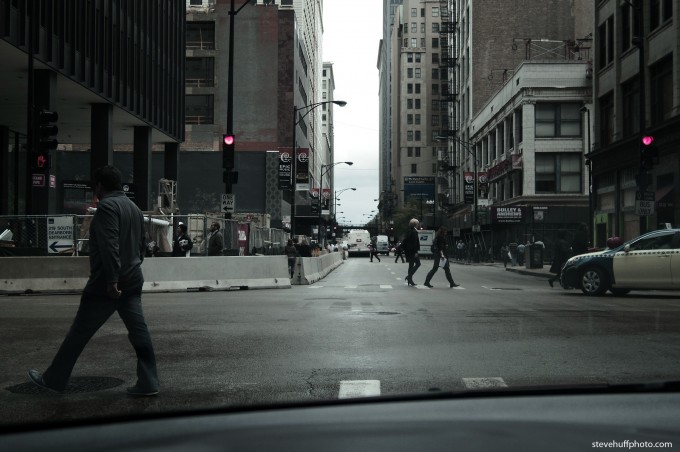

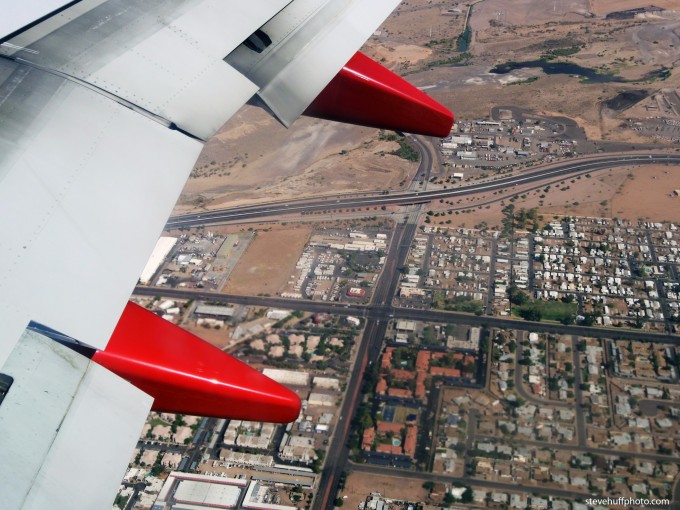

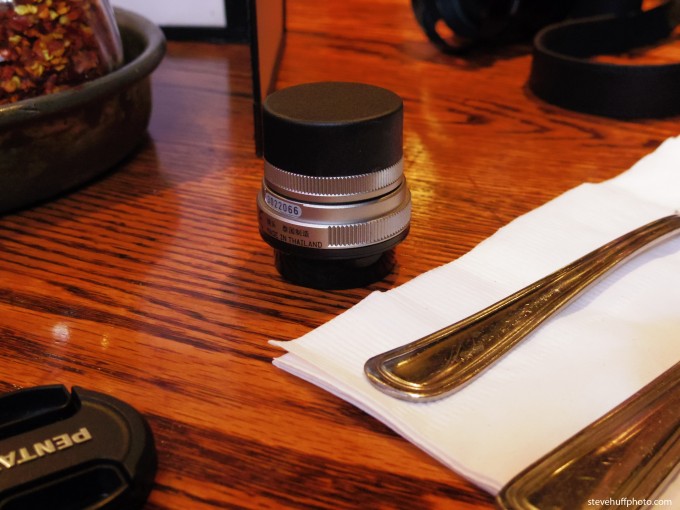
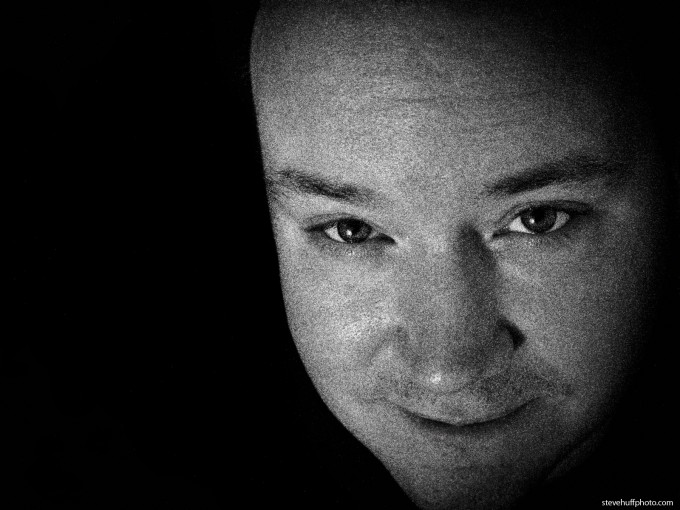
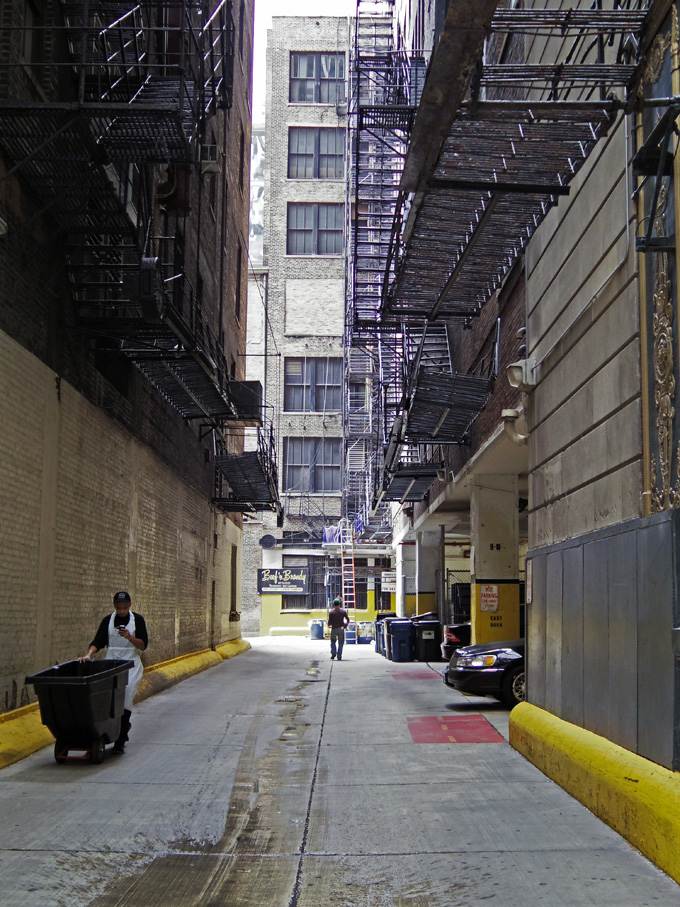
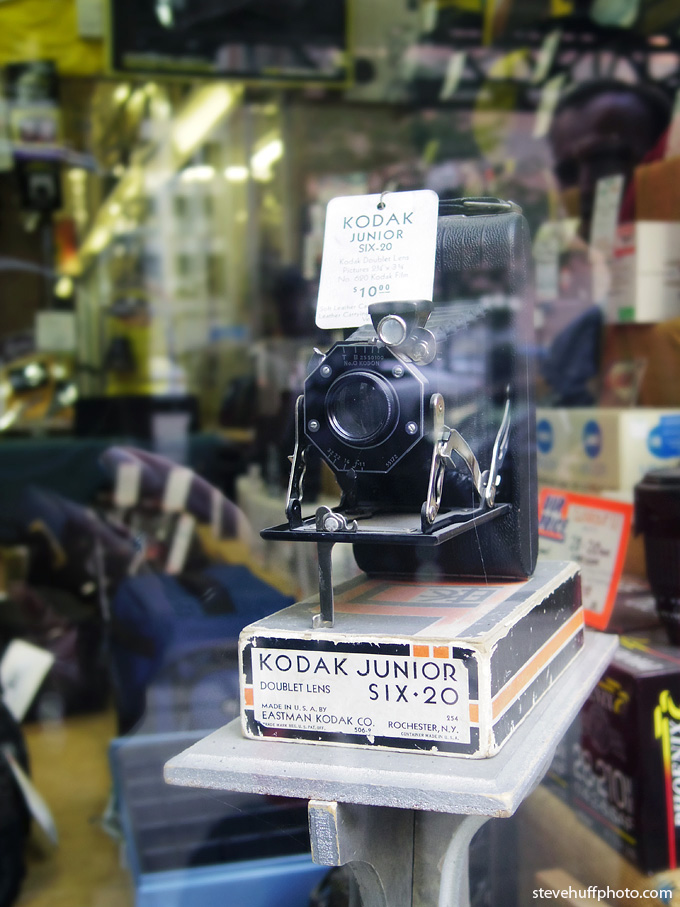
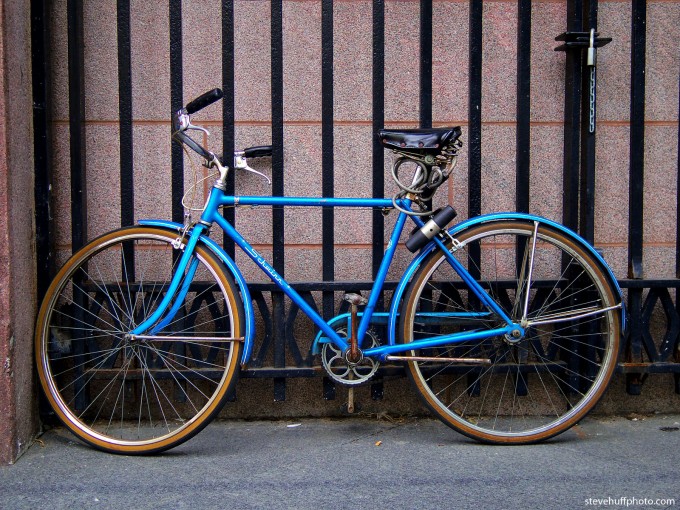

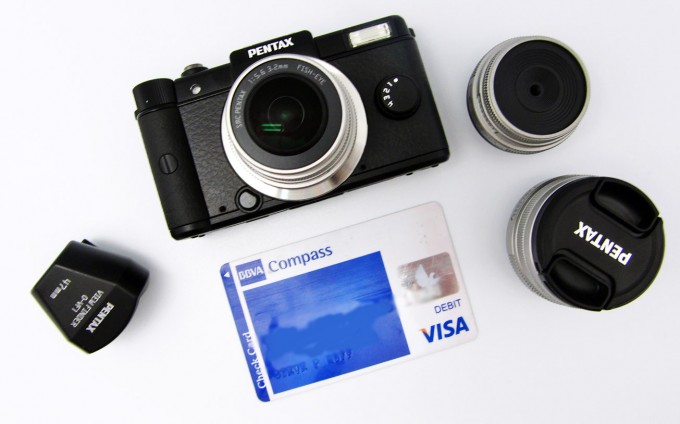
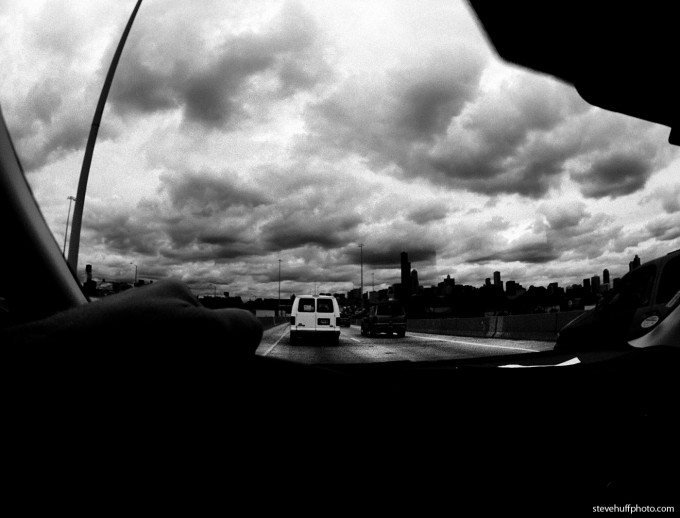
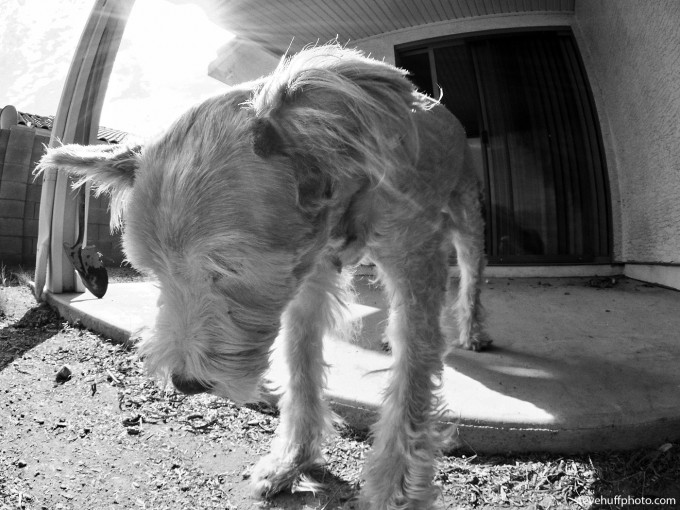

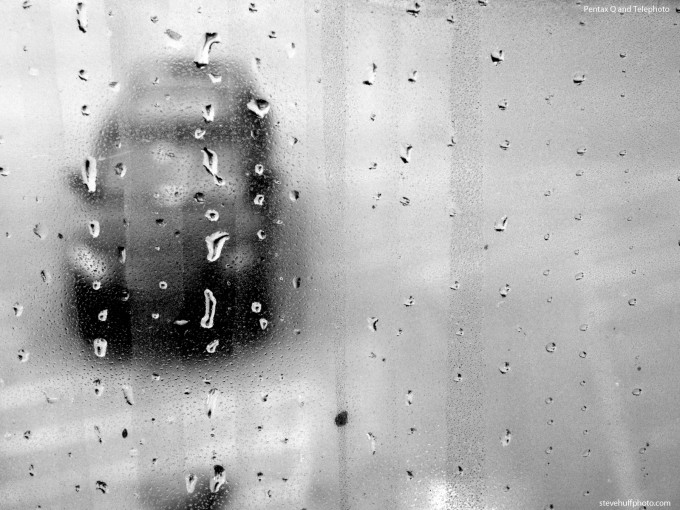
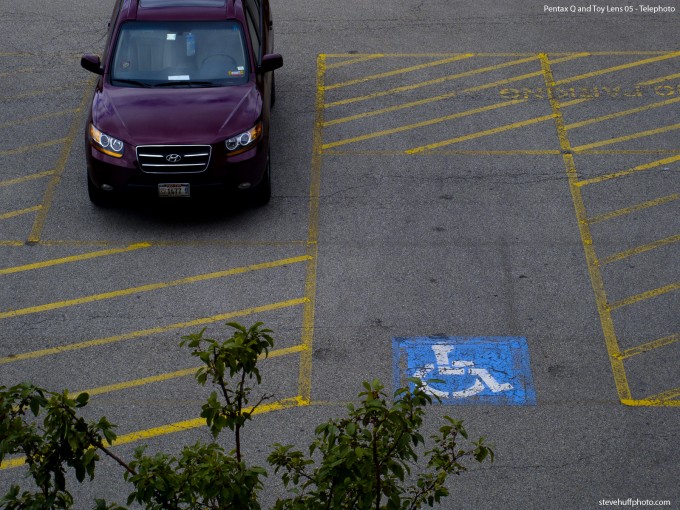
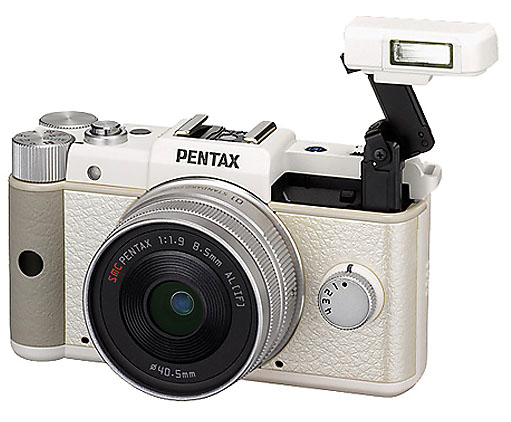
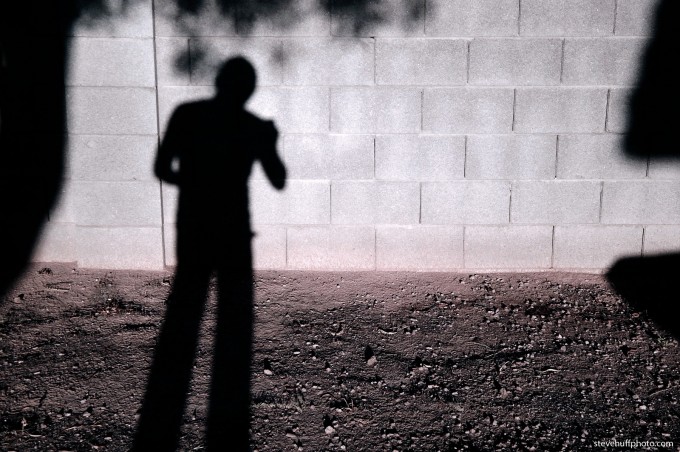
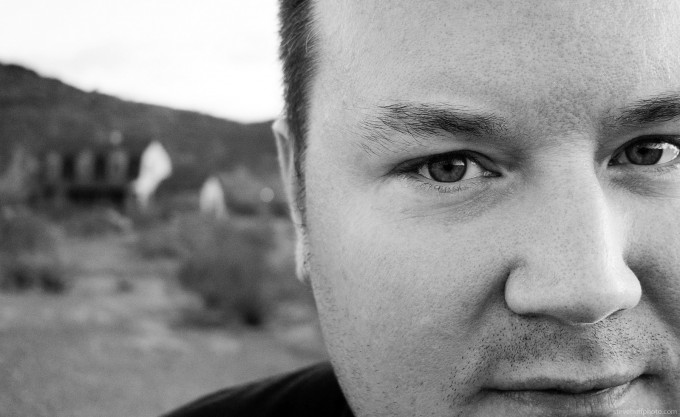

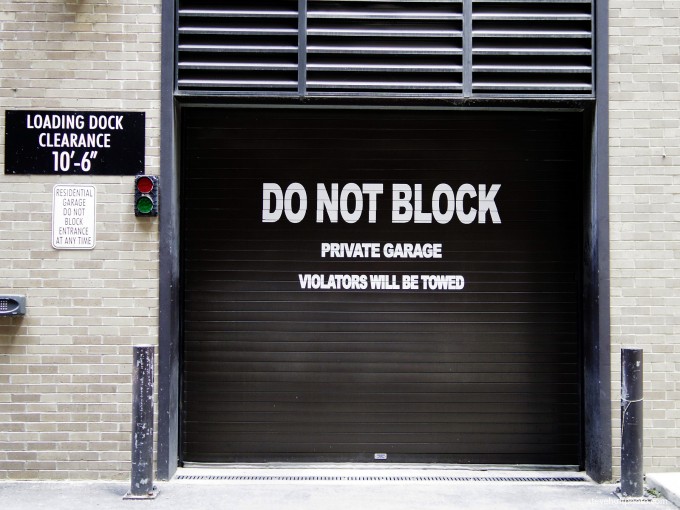
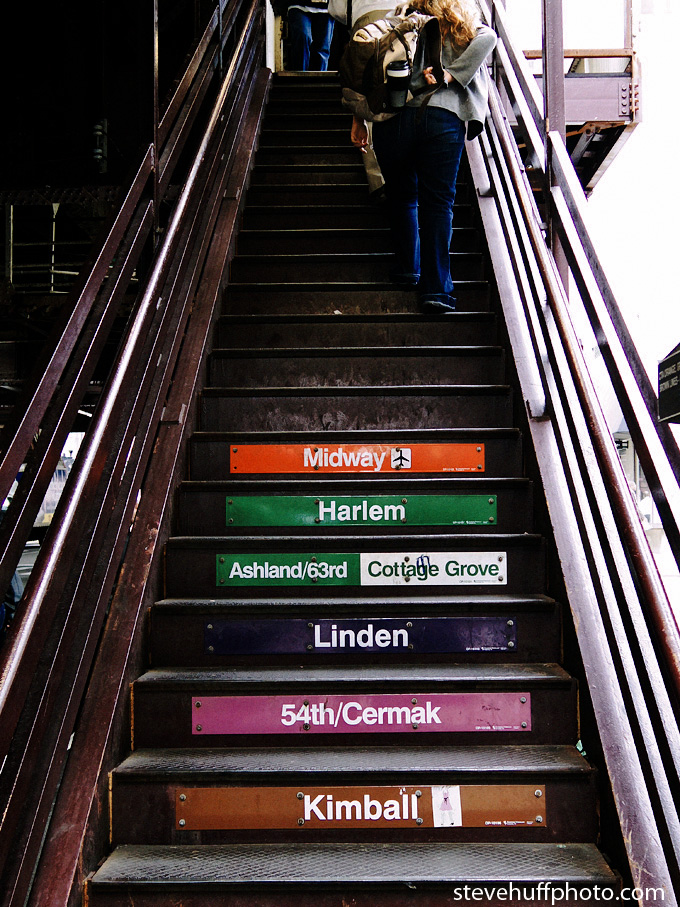
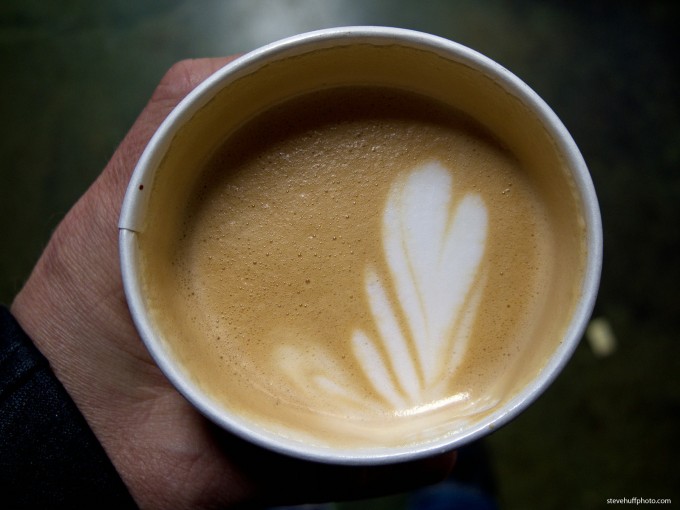


I am so glad to have read your review. After eyeing a Pentax Q, that was on sale, I finally bought it. And on clearance for $150. I am very satisfied.
Has anyone tried the Q7 with the bigger sensor? I am looking for a ‘proper’ camera for our son’s birthday. He is only 7 but is a good little photographer. I was also thinking of the Canon G16, and wondering how they compare on image quality, as the G15 might be more of a ‘boy’s’ camera as it’s a bit bigger and chunker lol!
thanks for the review, i recently purchased this model. Love it and thanks for helping me make the right choice for me.
The Pentax Q has been a great tool for me. Paradoxically it excels at both ultra-wide and ultra-tele applications, thanks to the 03 fish eye lens and the 5.5x crop factor. It’s small size and low mass make it ideal for pole aerial photography & a decent 200mm slr legacy lens turns into a very compact 1100mm equivalent super-telephoto lens. Then there are super macro possibilities too ..
I’ve developed an inexpensive pole photography method with the Pentax Q with the 03 fisheye lens:
http://kayakfari.wordpress.com/360-vr-panoramas/kayak-aerial-photography-method/
and the results:
http://kayakfari.wordpress.com/360-vr-panoramas/
It allows for a very portable setup, currently at up to 34 feet (10 meters). I am able to take it to remote locations by kayak for aerial photography.
The Q is far from perfect, and probably isn’t the best choice for everything, but what is? At the current closeout prices it’s a tremendous value!
Regards,
Flex Maslan
http://www.kayakfari.com
Thanks for all your info, Steve. It pushed me to get a Q on eBay. So far, I’m loving it and plan to take it to Europe in a few weeks. Tired of security pulling all my Canon and Lumix stuff apart. Just curious, did you take those camera store shots at Central? My wife is from Chi and we visit often. Can’t wait to get to Central every time up there.
Thanks for the review. I just bought this fantastic little camera and I love it.
Great review! I just bought a new Pentax Q with the 02 Standard Zoom for €199 (around $258) and I’m quite happy about this little toy. The original price was really high, I would never spend so much in a camera like this, but right now it costs about the same of a medium-high point and shoot but it offers so much more.
Thanks for the review. Helped me to decide for this camera:)
Great review. I just received my Pentax Q and purchased it for around £230 (maybe $350), at that price I think this camera is a real bargain. I have not had much chance to shoot with it but from the shots I have taken the picture quality is pretty damn good.
I have had a good play with the camera and settings and agree that this is a versatile camera and I will be happy shooting with it. The Pentax is so small that I am sure I will carry it with me and think that I will get some great shots as a result.
If you want rectilinear wide angle lens, you can use a CCTV lens like the Sunex 4.16mm lens. Manual focus but you can keep it fixed and get sharp from maybe 1 meter to inf. I did a lot of research to find it and you can read more here. http://retromcsmart.com/2013/02/11/pentax-q-alternative-lens-by-sunex/
Love this camera, but little dissappointed about the HD video quality. It doesn’t take out all the resolution compared to competitors. It’s like somethin between 1080p and 720p. I did a simple resolution test. http://retromcsmart.com/2013/02/24/pentax-q-full-hd-video-lacks-resolution/
Just picked up the Q and kit lens for $230! I am stoked to have this outfit.
End of October 2012 Ricoh-Pentax have issued a 1.1 firmware update:
http://www.pentax.jp/english/support/digital/q_s.html
This adds *focus peaking* for manual focusing and some other goodies (e.g. auto ISO in manual mode). Every Q owner should apply it!
For the 01 and 02 lenses there have have been firmware updates as well:
http://www.pentax.jp/english/support/digital/q_lens_s.html
The Pentax Q is a superb camera! Cartier Bresson would have loved it!
PS: for those still one the fence – get one NOW! For example here Gemany you can get it for 244 EUR including the 01 prime lens (e.g. http://www.pixmania.de/de/de/10820745/art/pentax/q-schwarz-objektiv-8-5-mm.html )
Hi Steve, I love your reviews! Way more focused on the joy of photography, as compared to some other sites that focus on technical details that go beyond most of our skills as hobbyists.
A question- not long ago I picked up an Oly E-PL1, body only, and absolutely love shooting manual with it. Much more recently, I picked up the Q (from Target for $300, with the 02 zoom), and a Minolta MC/MD adapter. With the firmware update, it’s not hard at all to shoot the Q with my Rokkor lenses; but I’m greedy and want to use my other manual lenses (I spent ALMOST $200 over a couple months, buying various old lenses, and adapters to micro 4/3). While I do see I could grab another round of adapters specific to each make of lens, I’m wondering more about m.4/3 to Q. Are there any that you know of? Is it even possible? Reason I ask is I have some really fast primes, and love the reach the Q gives me. In particular, there’s a couple Fujinons I’d like to try out. Thanks for any clues you might have
Hello Steve: Really enjoy reading your comments/ideas/suggestions. Just found the Pentax Q for sale, new in box, etc., for $246.95 at the NBC store. Target has it for $299. At $246 do you agree that this is a deal?
I think I will pull the trigger on this one as I am now retired and wanting to get back into photography.
Appreciate your comments. Kind regards…Claude
That is a fantastic deal. Great buy at that price no doubt.
Thank you Steve for this confirmation. I am looking forward to its arrival on Dec 24.
Enjoy your holidays!
Hi Steve,
I love your site and your reviews! Thanks for sharing them with us.
I’m going to NYC next month (I’m from Uruguay) and I was looking to buy something small and within a small budget (USD 300). I’m a Pentax owner, I have a K-x which I love with a couple of manual lenses and some digitals, but I was looking for something smaller like a mirrorless, mainly because I don’t want to carry the k-x over the streets and all the day walking. The Pentax Q seems to fit exactly what I need, but I have seen in your blog the olympus E-PL1/PL2 that in Amazon are around 300 USD (Pentax Q about 330 USD). I have investigated a lot, and judging for my owned lenses and the new K to Q adaptor, the Pentax Q seems better. But I see that the image quality of olympus is outstanding for that prices.
What is your recommenation / opinion? Thanks in advance for any advice you can give me:)
The PEN is a much larger camera (though it is still small itself). The Q is TEENY TINY and the lenses are crazy tiny. Putting a K lens on the Q would be rather funny IMO. Q also has a much smaller sensor..BUT I loved the IQ from it. Do you want a spy type of camera? The Q is that small. Just go with whatever one tugs at your heart the most 🙂
Thank you so much for your comment. I’ll do that 🙂
For me (as with many), the main drawback with the Pentax Q was the high price. I think this resulted in a lot of negativity as people were comparing it with what else you could get for the money (specifically with larger sensors). It would be the same if Pentax released an ASP-C DSLR that cost as much as their D645 medium format camera.
Unfortunately, this meant that some of the Q’s greatest assets (size, build quality, controls, sharp standard lenses) were being overlooked. This was a real shame, as there is still nothing quite like the Q in the market. On the basis that the best camera is the one you have with you at all times, the Q could be a landmark device, had it not been for the clumsy way the launch was handled.
Thankfully, the price has now fallen to sensible levels. Had the camera launched at these prices, I think the general perception of the Q would have been far more positive. What the fall in price has meant is that I’ve finally been able to purchase a Q for myself. Later today I’ll be collecting my black Pentax Q complete with Standard Prime and Standard Zoom lenses. The price? £308, less than 40% of the launch price.
I live in Paris and yesterday walked into Fnac in La Défense, what a surprise, they had five brand new boxed Pentax Q cameras (white model) at 299€!! I hesitated as I heard so many negative things about this camera. Today I found this review and based on the prices people mention here, I figure 299€ for the white model with 01 prime lens is a steal. So I will buy it today, I need something that I can carry with me all the time as my Nikon DSLR is just too bulky to take along anywhere unless I know that I am really off to shoot pictures. I will put the Q in my bag that I take to work and snap pictures everywhere, something that I cannot do with my DSLR.
I just borrowed a Q to play with it. The size makes you want to have it on you. I haven’t used the Nikon V yet. I can’t put the V in my pocket.
I am amazed what a small sensored camera can do. The Q is all that you said it could be and makes me really think about what I want to take with me. However, if I want the best quality from a small camera, it is the Leica M. However the Q just puts a smile on your face when you use it. Effortless and fun.
Thanks for the review and the time you take to put the website together.
( A Camera Review in the Style of BBC Top Gear presented by Jeremy Clarkson.)
I simply adore this little gem of a camera:
Introduction:
First off, there is a low light assist indicator at the top left corner of the camera. Second a pair of stereo microphones that are locate at the opposite sides of the lens release button and tiny speaker at the top left corner of the flash / accessory shoe. Other features include Dust Removal, Sensor Shift Shake Reduction, pop up flash, a customization knob with 4 settings at the right side of the camera. All dressed up in a Black Magnesium body with a 12MP CMOS Sensor that allows you to make movies in 1080 resolution.
The alternative spend $500-600 more on a Pentax K-5 body because that is exactly what you’ll get in a larger, heavier camera that does the same job as the Q only BIGGER!
The Layout:
Everything on this camera is well thought out. The dials and there are two of them and are made out of metal including the shutter release button. You have a mode selector dial at the front of the camera, very nice as it difficult knock out of place. Just slightly behind that you have a quick dial to adjust your settings, also difficult to knock out of place.
The buttons are small they have to be due to the diminutive size of the overall camera body.
Yet, what I love is that the script on the camera are easy to read.
The Negative:
No Weather Seals to protect the against the elements.
Accessories are expensive.
Either than that I simply love this camera so much that I wound up selling my pair of Pentax K-200Ds each with their own DBG-2 Battery Grips!
That’s like saying the Aston Martin DBS is a superb car but the Aston Martin V-12 Vantage is the one to have because is smaller and packs a punch due to the power to weight ratio with its 6.0 Litre V-12 engine.
In the end, the Pentax Q is inconspicuous, unobtrusive and ultimately it is COOL.
What a wonderful review of the Pentax Q.
I really like it. I have some incredibly sharp photographs with the 47mm equivalent prime lens.
I have acquired a Leica M to Q adapter and tried my M Rokkor 40mm and 90mm lenes. I discovered two issues…
1) When a manual focus lens is attached to the Q, the built in sensor based image stabilizer is not activated and the option in the menu is grey’d out and not available.
It makes using adapted lenes unusable for me.
My hope to use Pentax 110 lenes (50mm, 70mm and the 20-40 f2.8) is now unrealistic without a tripod.
2) Using the Q outside revealed too much glare on the screen. This is a camera that needs a built in electronic viewfinder. I am willing to have a smaller LCD or a smaller reflective LCD for control information only inorder to make room for a EVF.
I conclude that if you use a Pentax Q or a Nikon V1, one must use the native lenes for the camera with the appropriate vibration reduction.
The V1 does not even allow one to use Aperture Priority metering and AE with manual lenes. At least the Q does.
Right now, if one was to use adapted lenes, the best options remain the Ricoh GXR with A12 M mount, Sony NEX, and Olympus micro-fourthirds with image stabilization.
On further comment…
With the Ricoh acquisition of Pentax, I would like to see a P10 or S10 module that is a Pentax Q module with the Pentax Q lens mount and supporting auto focus.
Everything that is wrong with the Q would be corrected by using the Q mount and sensor in the GXR. The small lenes of the Q would make a very interesting alternative to the current P10/S10 modules. I would want vibration reduction. The accessory electronic viewfinder would make outside much easier.
With the K mount, M mount, and then Q mount, the GXR could be the most versatile camera out there.
I can’t put this camera down… I even started a blog about it http://www.adventuresinq.com
And I also I love you reviews and style of photography steve…
Excellent review by Steve and the fashion test by Sandy. This seems a camera for taking top quality pics anywhere, anytime and particular for travel where DSLRs are not suitable. I have tried numerous so called compacts and disposed of them all due to poor IQ. This might just suit my requirements – IQ is important for me. Not seeking 18 x 12 prints but quality 12 x 10 or thereabouts would be helpful and this probably goes further. Price? Well, you have to decide. It is a relative situation that is about your priorities, disposable income and the results you seek. I am interested, that’s for sure.
I read that this camera body and lenses were designed a few years ago and the only reason for it not coming to Market was the lack of a suitable sensor ie small enough to fit inside.
I had a look at the Q in a camera store in Edinburgh and was shocked at how small this camera is: I said to the salesman ‘it’s far too small!’ and he agreed.
We seem to have gone from having a megapixel race between the manufacturers to cram in the most on a given sized sensor, too a race to make the smallest interchangeable lens system camera: Pentax has won this round.
But it has gone too far now even allowing for the fact that you can carry a full system on tour trouser pocket, it has gone to an extreme that means handling is a problem; especially if you have big clumsy hands but it also has brought in the problem of lens quality too. You said that to get any kind of bokeh it has to do a
Trick in-camera rather than via the lens and sensor combination. Well, this is one reason why I bought a Sony NEX-5N twin lens set to replace my Nikon D90. Yes, I can hear those readers saying ‘is he mad!’ well, maybe but, I think we are at a stage where DSLR cameras are no longer needed to get the bokeh, image quality etc but I drew a line at the size of the sensor I was willing to trade down to. So, I now have a camera with interchangeable lenses, with a large sensor (APS-C) which matches the best of Nikon and Canon consumer DSLR’s. Ok, Sony kit lenses are not the best but neither are Nikon’s kit lenses too!
Anyway, a nice review as always for you, Steve.
Hi Steve,
I have had (owned) the Pentax Q now for two (2) weeks — I work in photo retail in YVR —
and I have to agree with everything you have said about the camera and lenses ( I own the
Prime and FishEye). Also, I am really glad you mentioned ‘your difficulty in focussing with
the FishEye’ because I have had the same experience as well. But, sadly, I have to admit
that initially I forgot it wasn’t AF and so I was just ‘pointing and shooting’ 😮 🙁 Now, I (try
to) remember to focus 😉 but, thanks to you, I shall now try to find the Manual Focus assist
and start utilising that 🙂
I agree with your summation, that if the price were (a wee bit) lower it would move quicker 🙂
Cheers and thanks for a realistic review 🙂
Jack Simpson
Hi Steve,
The picture from the bar – “ISO 3200 with the fisheye lens….” – is ISO 2500 according to Exif data.
Still very good for a compact.
Toy and not a tool? Its all about emotion, like photography is. Love and passion. Good luck.
Should be $450
Great review! Bought the Q and love it. The menus and controls work very similar to the Pentax K-5/K-7. This is a big plus for Pentax shooters. The Q often gets compared to other P&S and mirrorless cameras. It does have features that enhance its performance. You can shoot multiple exposures to reduce noise ( amazing what 9 shots can do). The Q will also align 3 image handheld HDR images. Such a neat camera.
Is this a Q feature? To shoot multiple shots to reduce noise? i..e creates a single lower noise jpeg similar to what Sony does? Thanks.
if that is what ur looking for, the Casio ZR100 would save ur $400 and yet shoot faster
I didn’t say that’s what I was looking for nor do I agree that the Casio is better than this camera. Sorry 🙂
Sure there is nothing really like this out there, but they could have at least gone with a 1/2in sensor to at least differentiate it a little more from the rest, and it wouldn’t have been much bigger.
An M adaptor would be hillarious- the mount and sensor are so small it would look like a funnel!
Add a Leica M mount adaptor (I think they are coming?), buy an old 135 f4 tele elmar and you might have a half decent pocket bird photography set up for travelling. What do you reckon?
Good luck manual focusing this combo
Yes they are already available for order I noticed
I fail to see how the LX5 lens that does 90mm at f3.3, is inferior to the Q 100mm lens at F8,
If anythingm the lx5 has the edge in the lens department,
not to mention the 112mm f2.5 of XZ-1,
the Q prime 47mm at f1.9 does not stand out in any way in compared to the mentioned compacts,
if anything the current lens lineup of the Q is its biggest downside,
This comes from a person that shoots only with primes, i’d prefer the XZ-1 zoom at any time! and would get a better TRUE bokeh, no “BS”..sorry, i meant “BC” mode needed!
my conclusion after reading this …
Steve could take interesting photos regardless of the cameras used. This Q review is the proof!
BTW, all images in this review were shot JPEG as Lightroom and CS5 open the RAW flew they do not yet do the lens correction. Just an FYI to all.
Thanks everyone for reading the review and the comments!
I think Pentax’s biggest surprise with this camera is it’s JPEG engine Steve. Well that andf the sorta Swiss Army Knife Approach to it capabilities!
Sandy I agree with you. As a JPEG shooter, to me both Olympus and Fuji have had the best JPEG engines and color. The Pentax K-5 has a decent JPEG engine, the filters are very nice. For the usual photography though I still consider Olympus/Fuji better in this area. With the Q I am seeing Pentax addressed some issues I saw in color and seems like they upgraded the quality off their engine.
That they still have those filters is very nice. Incidentally, when you shoot say “toy camera” filter or high contrast black and white (“smart effect”) I am guessing the camera stalls processing with a progress bar? The K-5 does, and if the Q doesn’t that’s a step forward also.
It doesn’t stall 😀
I have the Q and I love it. It and my Ricoh GRD3 go with me everywhere nowadays. Seriously good times for serious compacts. Great review Steve!
It is a toy, with smaller sensor than S95, S100, XZ1, LX5. Interchangeable lenses at this size are a toy feature, and an unethical approach to make customers to spend more on accessories.
There are only two, perhaps three “serious” lenses (standard prime, standard zoom and maybe fisheye) which in relation to the actual size of optics inside are rediculously bulky. Is there any body/lens configuaration where the Q has either smaller size and faster f-stop than a S100 or XZ1 (taking into account a 1/1.7″ sensors’ better high-iso performance)? For me that is the killer criteria.
I didn’t find it bulky at all, and the lenses are tiny, Pentax Auto 110 tiny. This is not a NEX situation where the lenses are huge in comparison to the body. The Q’s lenses seem very well balanced to the camera in my use and experience.
I like how some people like you keep equating image quality based on a mere sensor sized spec. Keep in mind the Q sensor is *new* while those you mention are *older*. Technology does move forward.
I don’t take as a given the Q would do better either, but looks from the evidence that it may very well be doing at least a bit better.
Not sure why comparisons to compacts keep being made. When I bought the Q I didn’t consider any on your list because they don’t have interchangeable lenses. Unethical because of the size? What a weird comment, I wonder what you’d think of a large format photographer telling you that a DSLR is an unethical product.
A f1.9/8.5mm lens in a 23xØ45mm casing is bulky. The XZ-1’s f1.8-2.5/6-24mm zoom (!) is about the same size (the part sticking out from the body). At 10mm (equivalent to 8.5mm), the XZ-1 has perhpas f2.2. The XZ-1 1/1.7″ sensor is about 40% larger, compensating the lower f-stop.
A f2.8-4.5/5-15mm zoom lens in a 48xØ48mm casing (sticking out from a 30mm thick body) is bulky. On most compact cameras, a lens with these specs retracts flush into a 20mm thin body. Or compare that with the Sony’s f3.5-5.6/18-55mm for NEX APS-C sensor (lens dimension 62xØ62mm).
Hence I don’t see the advantage of interchangable lenses for this sensor size, even when disregarding the price and hassle of carrying additional lenses. The Q may have the world’s best 1/2.3″ sensor and image processor which may compensate the size handicap, compared to older generation 1/1.7″ sensor. But the new 1/1.7″ generation is just arround the corner (Canon S100).
It’s not all about sensor size you know. It is really mostly about ease of use and how much you enjoy using the camera. A camera should seem transparent to the process. Why do you think that back in the Film days when we had cameras like the Nikon F5 and Canon 1V people still lusted after a camera not really more advanced than a Pentax K1000 (i.e. the Leica M6)?
Really if sensor size is all that you care about why use anything less than say a Phase One back on a MF camera or better yet a Better Image scanning back on a 4×5?
All in all a fair asessment. I personally couldn’t believe how a camera this small could be this good, but it is, and like you said it’s hard to really illustrate just how small it is. The price is a bit steep but look at what Nikon is asking for their “1” series- and you gotta know those are plastic bodies with minimal control.
The V1 body is magnesium/aluminium alloy and the J1 body is aluminium alloy.
The J1 still feels like a Holga. The V1 feels good in the hand though
Thanks. Let me summarise your review and everybody else’s. They are all basically saying this – The Q is very good indeed for this sensor size, but not so good for its price.
Hi Sandy,
do I understand you correctly that the Q outperforms the LX 5 in handling and IQ? we talk about 2-2.4 x the price depending on lens. For me viewfinder is a must, same is a zoom, not necessarily for far away objects but to frame when I cannot get closer or further away. A 24-90 like LX 5 is ok for me, my Nikon kit is 27-83 in film.
With a zoom and VF the Q gets quite expensive, in another class as LX 5 or G 12. Ok, the Q looks much better, same does the Fujii x 100, but after a few weeks the look doesn’t matter any more, one gets used to the handling (most of them, some hidden functions never stop to annoy) and what stays for years is the IQ
Best regards
Heiner
The VF is optical and only for the standard lens. It looks like a shoe mounted finder made by Cosina (look at say the Voigtlander 40mm finder for a comparison) The Zoom would have to use the rear screen. I found the screen sufficient for what I shot with it, and can’t really comment on the zoom as it wasn’t available at the time Pentax sent me the camera to review.
As far as IQ and handling, yes it beats the LX5.
One more shot I did at Fashion Week with the Q to show IQ. This was during the walkthrough, shot at ISO640. I shot in burst mode with the AF tracking on and all five shots came out sharp.
[img]http://farm7.static.flickr.com/6157/6191688016_687d50eeaf_o.jpg[/img]
Nice range control there with such an extreme exposure…
Thanks. Purely manual setting for this shot. I think it was f4 and 1/320th shutter
Was this a JPEG or RAW? Thanks Sandy.
Everything I shot during my review Raist was done in JPEG. You can read my entire review here – http://www.adorama.com/alc/article/The-Pentax-Q-Fashion-Week-Stress-Test and read why it was all in JPG. It is a little different approach than Steve’s real world approach as what I put the Q through was certainly not what Pentax had intended for it lol!
Oh yeah I read your diary. I forgot it was RAW. I just hadn’t seen that shot you are showing now… missed it somehow. Thanks again!
Definitely a better camera than one would expect. I still maintain its a touch expensive, but pentax has proven me wrong greatly in the IQ department. Seems to have that extra oomph over the canon sx230 HS. Well at least they will be able to drop the price down to a $400 sweet spot eventually to have them sell like hotcakes. Sadly the Nikon J1/V1 pictures are not looking so good on the full res samples, but like with the Q you never know until reviews are reviewing en mass.
The v1 and j1 photos I have seen are a lot better than what comes out of the Q. The Q photos are nice, very nice for the sensor size, but clearly not on the level of the new Nikons.
But the new Nikons have an interface that at best can be described as hair pullingly frustrating. I speak from experience here having used the J1. I would rather use a camera that I can easily get around and take the very slight hit on IQ than use something that as a Pro photographer could figure out how to get the three most important controls. Sure the IQ is nice, so is the IQ from my Sinar, but I sure as hell wouldn’t be using that daily
Good to read.
How big is the chance that when you change a lens when drinking coffee, that you leave a lens next to the coins for the waitres?
Right hands. Nice shots.
.
Yes, it’s a handy little camera. But take off the lens to swap it, and the sensor is SO close to the front of the camera and SO unprotected ..it could do with a protective shutter which closes in front of the sensor, when a lens is removed, to screen it from dust.
The lens-protected and truly pocketable Fuji 500 – or Fuji 505 / 550 if you want RAW files – has a 24-360mm equivalent zoom (no need to remove the lens and get dust and muck inside) outstanding low-light and high detail performance – and you can always imitate shallow depth-of-field – with any digital camera, whatever the camera or sensor – by using OnOne’s ‘FocalPoint’ software ( http://www.ononesoftware.com/products/suite/focalpoint/?ind ) ..a bit like tilting the baseboard when printing film with a traditional enlarger.
.
..er, tilting the baseboard to correct verticals, of course: I just used that as a quick example. To blur regions of the print you’d wave a piece of fuzzy glass or plastic over the enlarging paper ..but I thought “tilting the baseboard” was a snappier phrase to convey fiddling and adjusting the picture after the shot was made, using old-style ‘chemical photography’.
I found that stretching ladies panty hose also gave a neat effect.
The whole talk about small sensor is painful. People go on about it like they used to Megapixels. Once people learn that it makes no difference what is the next item that people will go on about? Shutter lag?
Also bokeh is the quality of out of focus area – like we use the word “quality of blur” – it isn’t the blur itself that is called the “out of focus area”. “Bokeh” is not an effect. It is a metric – like tempreture. It is hot or cold. It isn’t “weather exists if you do this” – weather is always there.
Richard, I agree about sensor talk being painful. Seems everybody is an “expert”, and they know better about the choices of sensor than the camera makers do.
Anyway, the images on your website are superb. I’m glad I stumbled on them after reading this fine review by Mr. Huff.
Steve, you got me totally interested in the Q. I visit your website frequently. Thanks.
Agree. In the end for me it’s all about usability. If I want pure IQ I would own a P60 back for my Contax 645. I think the vast majority of folks on the net spend too much time looking at specs instead of just going out and shooting. Why I love the Q – it is very easy to use and just plain fun
Actually when you remove the lens a protective shield covers the sensor
.
How strange ..not when I tried it! Took the lens off, put one on, took it off, put it back ..still nothing protecting the sensor. Perhaps there’s a special setting hidden within a menu to enable it. It certainly needs some protection.
it looks like a glass filter over the sensor very close to the mount, but the sensor itself is much further back as indicated by the focus plane marker on top of the camera. The glass protector slides out automatically when you dismount a lens much like the Sigma SD series DSLRs
.
Thanks, Sandy. I’ll have another look..
That’s good to know! I was wondering about that myself.
I like that you do proper user reviews, disregarding the predjudice against the Q’s small size and sensor. These latest small cameras offer great possibilities, particularly for street photographers, and your images show the Q produces fine ‘real world’ images. For me, the only Q con is the price, which will surely fall in the coming months.
But its the Fuji X10 I’m really looking forward to …
Awsome review as usual, Q is suprisingly good. How compact did you find it to be with the 47mm lens attached? is it as compact as GRD III? or more like the D-lux5, which has a little bit of lens sticking out?
Meh, no thanks!
Nice review. It would have been even nicer if you took a picture of the camera next to other cameras like the Leica M9, Sony Nex 5, Canon 5dII. That would help give an idea of it’s size – at least it would help me.
Steve thanks for the review. You do mention one deal breaker for me- you can’t put it in a jeans pocket with the Prime 1 lens. Seems like a very interesting camera- a digital Diana-mini combined with semi entry DSLR capabilities in the right shooting conditions.
Not fitting in a jeans pocket makes me wonder then, why pick this over a micro four thirds Pen for example. At that point you are carrying the camera outside. Does it feel that much of a difference at that point? With both you could take out the lens, put the cap on the camera and lens (with pancake lenses or the new Olympus primes on the pens) and put each on each pocket. I suppose the Q would still fit better but yeah. At that point I don’t know.
I was really hoping the Q would fit in a pocket like that. It should still weight notably less and still be overall smaller I suppose.
The 2nd question I still have is – is it better than the LX5 image quality wise. I go back and forth as I see shots that do suggest that followed by others where the LX5 seems to do as good as. Since I already have an LX5 and the LX5 does fit in a jean pocket, you can imagine why I am pausing instead of jumping, particularly at $799 USD.
– Raist
It won’t fit in a jeans pocket with the lens on unless you wear very loose fitting jeans, however it fit quite well in my blazer jacket
And I am sure the E-PM1, and G3 with a prime lens would fit in a jacket pocket, and take up most of the room.
Surprising… but it’s still the ugliest camera I’ve ever seen.
The Q is all very nice and full of personality, except the price…
I wouldn’t pay more than $550 for it.
Just picked it up on Amazon for $230. I got a 2nd one on ebay for $180. These things are cheap and both came with a lens.
Hi,
sso the Pentax Q has no View Finder (Steve and many others like me prefer it – for framing and stabilazation of the camers), it comes with a prime lense, so you have to buy a zoom as a second lense and then you end up somewhere at 1250 $.
For roughly 510 $ you get the Lumix LX 5 and a View Finder.
This is a camera some pros use (like Charlie Waite) with photos that I could not belief had been shot with a small compact! (He also uses lager DSLRs but some LX 5 shots were published in What Digital Camers a few months ago.)
So for what reason shall I spend 2.4 times the money – to be cool?
I am seriusly looking for a small camera (Canons G 12 is on the shortlist as well). I have experience with Leica lenses on Lumix (FZ28 and 40/45) and I really like the IQ.
Anybody here who could compare these cameras already?
Best regards
Heiner
Having reviewed the Q myself and having used the G12, trust me, the Q is worth every penny.
Sandy what I really want to know is, what is the advantage of the Q image quality wise vs the LX5.
The backlit sensor of the Q has better low noise performance than the LX5 from what I can tell. While Steve says he wouldn’t take it above ISO 1000 in color, I thought it did a serviceable job up to 6400. Yes it is not at D700 levels but really not bad considering as this ISO 6400 shot of Mike Musto at a fashion show displays.
[img]http://farm7.static.flickr.com/6154/6191633996_5e1799aed6_o.jpg[/img]
Not that bad for a small sensor. If you want a small everyday carry around and have fun, and get excellent quality camera that is built like a Sherman tank, you wont get much better than the Q.
Looks fine for computer presentation but what about a 12″X18″ enlargement @ 300dpi?
well the aspect ratio isn’t going to 8×12 without cropping. More like 8×10.5. I’m sure it would be perfectly fine for all but the most critical applications. For what this shot would be intended to print (i.e. newspaper next day) it’s overkill
Sandy, while you provided a bigger shot, which I appreciate, I am not sure the LX5 wouldn’t do as good if it was pushed to this ISO from ISO 3200, at the sizes shown. I did a test recently to this effect and the LX5 did rather well (RAW). By well I mean comparative to this.
The shot I shot though was not as colorful as yours and I need to try with a shot that has different colors as shots without much color to begin with would certainly do better though. That’s the thing- if the LX5 does as well (and it does fit in a pocket), I have a real hard time justifying spending $799 USD on the Q as much as I would like to have it.
Thanks for sharing that again. I am going to do another test with my LX5 and go from there. If you are interested I can send you the shot when I am done with it.
Well this shot was JPEG straight out of the camera no adjustment default NR. I can give you a full res shot if you like. The point is I can do this without having to first shoot RAW then push process. I like having to do less work lol!
Oh and Raist I would love to see your experiment with the LX5
I would love a full shot if you are willing to part with it. you can send it to raist3d at that google e-mail . com 🙂
OH, when I was using Olympus E-3/420 as my main system I would normally shoot JPEG, not RAWS. I am with you there 🙂 Yes, for a JPEG I must say it looks pretty darn good at ISO 6400 considering how well the colors are kept, at least for reasonable sizes. I’ll agree with you on that. The LX5 JPEG engine isn’t much good in my view, except for the dynamic B&W and above all the superb grainy B&W which I wish Panasonic made a “first class citizen” as it can’t be used in aperture priority.
Sandy, how do I contact you? I should do my LX5 experiment. What I would do is shoot in in RAW at ISO 3200 and push to 6400.
Hi raist – just reply to the email I sent you 🙂
I saw a tiny old Pentax at Central Camera which was film. A little smaller but essentially the same with similar size lenses. The film it took was tiny cartridges – 160 I think. It had a space of capture about the same size as this sensor. People had good things to say about it.
Apparently, this Pentax may be from a tradition of Pentax high quality tiny compacts that I was previously unaware of!
Great review Steve!!!!!!!!! Half of any camera excitement is from the hardware- half your reviews!
That would be the Pentax Auto 110. You can see the Q side by side with it here – http://www.adorama.com/alc/article/The-Pentax-Q-Fashion-Week-Stress-Test
Thanks Bradley! I saw that Pentax at Central and an old PEN film camera as well, pretty cool stuff.
Nice to see a rather unique item like this actually given a chance and reviewed. On so many forums it seems most posters took this attitude that if its not at least APS-C its a waste of their time. Obviously one can only expect so much from a smaller sensor, but as you showed, IQ alone does not equal FUN.
Seems a shame they have such slow “toy” lenses at the moment as a 18mm f2.0 or so would probably open up a wealth of shooing options with a 100mm equiv f2, and perhaps a fast wide to go along with the kit lens. Given the small sensor, I’d assume one would need all the light gathering possible and where a f8 lens could prove useful other than outdoors on a sunny day I don’t really know.
The 100 f/8 is not useful indoors and would be an outdoor only lens. Also not sure why they say it has a Toy Effect as it doesn’t. $79 though…
Thanks for the review, Steve! The Q looks like a fun little camera. I wonder how the picture quality compares to an Olympus XZ-1 or a Panasonic LX-5.
My main issue with the Q is the high price. I thought the E-P3 (which I am currently using) was expensive, but still justifiable, but $799 for the Q? I would start considering it if it were sold at $499…
At least the lenses are cheap.. Looks pretty neat. I would look closer at it if the body was more like $500.
Great review Steve, and it makes me wish I was your neighbor so I could see it in person…
An interesting comparison would be the Q to the Olympus E-PM1… I think you yourself would find the usability of the E-PM1 to possibly be not as fun because of the lack of buttons and dials, however, you get the EP3 focus speed and image quality in a smaller package (and for only $499). Maybe I’ll have to send you mine to test out if I can part with it… LOL
You need that 45 1.8!
Sounds very interesting Steve, the bokeh control is a nifty trick from Pentax to “hide” the DOF problem with small sensors. However as you mentioned, it’s a hit and miss, I hope Pentax can get the software to perfection, and I’d probably take this up for a go anywhere camera.
Great review, Steve! How was the external finder? It is $249! I am amazed by the quality of the photos considering the sensor is the since of a finger nail. Also how is the battery life?
Thanks, JT
On the battery question, I usually got about 300 or so shots per charge
The external finder is nice quality, and large. Expensive for what it is though IMO. I had it here but didn’t use it much, only in bright light. If you like external OVF’s then you would love this one, but worth $250? I don’t think so.
Glad to see we mostly agree in our reviews Steve 🙂 I found the tracking focus quite accurate when usong it during Fashion Week in my review. Now here is the kicker – I have to admit a m4/3 or APS-C unit will usually win in IQ, but IMHO the Q is the best MILC on the market right now. The image quality is excellent for the vast majority of applications one would use a MILC for outside of DSLR replacement, and the user interface and controls is light years ahead of any MILC I have tested or use outside of the Leica M (yes I consider rangefinders MILCs – call me a purist) or even better the Epson R-D1.
I feel the Q represents what an MILC should be, and feel purely on build and usability worth every penny that Pentax is asking. BTW the lens is actually metal for the kit lens, just very thin metal lol! Now if the rumoured APS-C version Pentax is said to be working on is anywhere near this in build and usuability, watch out – they win.
Hey Steve!
Great review!…Pentax changed my world…I got a Pentax k-5 2 months ago and I love it!…in a couple of days, the Q is gonna be in my hands….Reading your review made me feel happy about my choice…so excited for Pentax’ future with Ricoh…..
Awesome site.
Greetings from Lima, Peru, SA
Pedro
Loved the review! It’s refreshing to hear something positive about the Q after all the bashing it has gotten over at the PentaxForums. Thanks.
Loved the review. Great little camera!
Kudos Steve, I know I have taken you to task a couple of times about your Leica lust – but I really enjoy your site and insights into the photographic world.
Truthfully, a camera like the Pentax Q is completely off my radar as a camera to buy but I read and enjoyed your review in it’s entirety.
And here’s the kicker … I just purchased an M9 and Summicron 35 lens!
Love it love it love it love it Love it love it love it love it Love it love it love it love it Love it love it love it love it ——-
Thanks for the real world review. I like the performance of the camera (or is that your skills making the pics :)). Either way we need more reviews like this on the web for other cameras (hint: waiting on NEX7)
Main drawback for me is the sensor…but again, this is very good for its size, very good! Ultimately not worth the price though with the EP3 and NEX5N lurking.
Thanks Steve
Thanks for reading!
I sure like mine.
LOL the “Mario’s Bike” story on video…
Looks like a great camera!
Very fine review! Thanks for posting it!